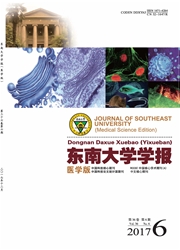

 中文摘要:
中文摘要:
目的:探讨大鼠肾小管上皮细胞的体外培养及鉴定方法,为肾结石病的研究提供实验平台。方法:采用机械研磨、Ⅰ型胶原酶消化法分离出肾小管节段,在含10%胎牛血清和1%上皮细胞生长因子的上皮细胞培养基中培养,0.25%胰蛋白酶消化后传代培养,并用原代和传1代细胞做免疫细胞化学染色鉴定。结果:细胞培养至第3天完全贴壁,4~7d处于对数生长期,为多边鹅卵石样;免疫细胞化学染色显示cytokeratin18表达阳性。结论:机械研磨、Ⅰ型胶原酶消化法结合使用上皮细胞培养基可以培养得到较纯的肾小管,是大鼠肾小管上皮细胞原代培养的理想方法,为进一步研究泌尿系结石病因和机制提供了实验基础。
 英文摘要:
英文摘要:
Objective:To discuss the method of the primary culture and identification of SD rat's renal tubular epithelial cells,thus to supply an experimental platform for the study of renal calculi.Methods:The renal tubular segments were isolated by mechanical grinding and collagenase Ⅰdigestion.The collected cells were cultured with EpiCM,which contained 10% FBS and 1% EpicGs,in incubation with 5% CO2 at 37 ℃,and subcultured with 0.25% trypsin.The cultured cells were identified by immunocytochemistry.Results:The cultured cells were completely adhered after 3 days,the logarithmic growth phase was beween 4 and 7 days.The cells were large,displaying the typical cobblestone appearance.Immunocytochemistry suggested that the expressions of cytokeratin 18 in renal tubular epithelial cells were positive.Conclusion:Mechanical grinding and collagenase Ⅰdigestion combined with EpiCM is an ideal method to collect and culture the renal tubular epithelial cells,and it provides the experimental basis for further study of the etiology and mechanism of urinary tract stones.
 同期刊论文项目
同期刊论文项目
 同项目期刊论文
同项目期刊论文
 期刊信息
期刊信息
